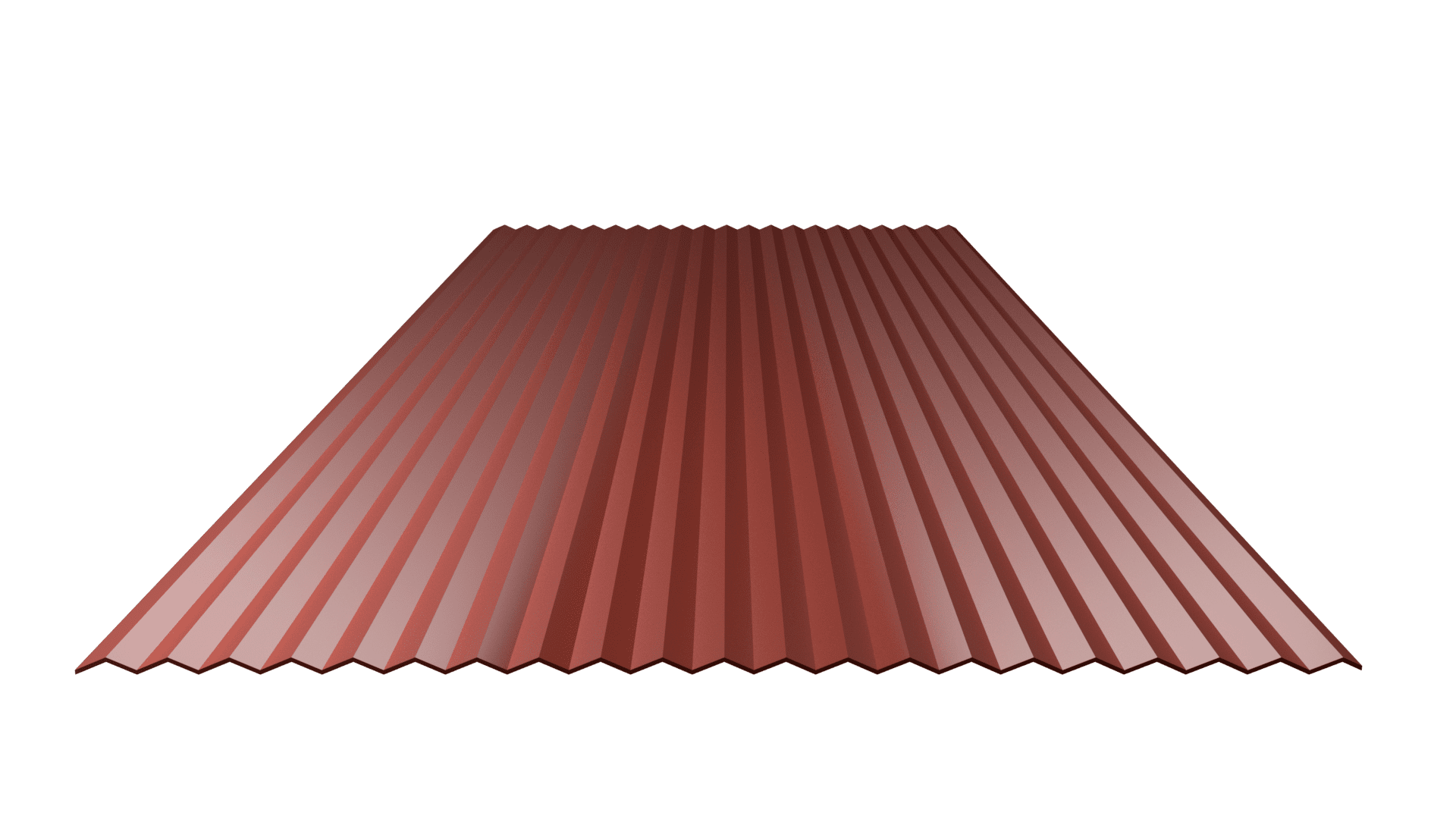Corrugated panels are metal panels that use a repeating U-Shaped wave (“corrugation”) pattern in its design. They have been used as roofing and siding options for over 100 years and were the first metal panel to be mass-produced in the United States, and are widely known to provide exceptional structural stability.
History of Corrugated Panels
Corrugated roofing and siding panels are recognized as the first metal panel profile to be developed. Its origin dates back to England in the 1830s, but corrugated panels have a deep history right here in Wisconsin. In 1912, the Trachte Brothers, from Madison, WI designed and patented a roll-forming machine to manufacture corrugated livestock water tanks.
Young entrepreneur Arthur Trachte utilized corrugated steel panels to build a structure to house his new Dodge automobile in 1919. His new garage garnered considerable attention from friends and neighbors, inspiring him to begin selling complete garage packages. An 8’ x 16’ garage sold for $100.
Since then, many other roofing and siding panel profiles have been developed that offer different aesthetic appeal, greater strength, and improved weather-tightness. However, the classic appearance of the early corrugated metal panel is still relevant and popular today. In fact, over the past couple decades, the use of corrugated panels has grown significantly as more and more people appreciate the classic and nostalgic appearance of old-style, corrugated panels.
During the height of the Industrial Age, steel became relatively cheap and abundant. Metal was viewed as the kind of material that offers an economically-viable way to cover large agricultural and industrial buildings. Back then, the panels were often non-coated, but that was not a problem, since there were plenty of spare steel roof and wall panels to replace any corroded ones. Unlike the uncoated panels made 100 years ago, most modern corrugated steel panels are normally coated with a metallic (zinc) finish to prevent oxidation and corrosion, and thus made to last for decades.
Corrugated panels are classified as exposed fastener panels, which means they are attached via fasteners that penetrate the panels and attach to the framing or substrate below. The appearance of corrugated panels can vary based on rib height and width. All American Steel offers two profiles, both on galvanized metal only.
1-1/4” CORRUGATED
One and one quarter inch corrugated panels are available in galvanized material only. Their coverage is 24 inches wide and the rib height is one quarter of an inch high, with an overall formed width of 26 inches. They are fastened with exposed head fasteners (screws). Our stock panel thickness is 30 gauge, but a 32 gauge panel can be special ordered if desired.
2-1/2” CORRUGATED
Two and one half inch corrugated panels are available in galvanized material only. Panel coverage is 24 inches wide, with a rib height of ½ inch. The wider rib width (2-2/3”) gives this panel a different look than the 1-1/4.” The overall formed width is 26 inches. Stock panel thickness is 30 gauge, but a 32 gauge panel can also be special ordered.
WHAT DOES PANEL GAUGE MEAN?
The smaller the gauge number, the thicker the material. And the thicker the material, the more durable it is. Though thickness does add a little more to the labor intensity, and hence cost. Typically, the products are sold in a 26 or 29 gauge, or in the case of galvanized panels, 30 gauge.
ADVANTAGES OF CORRUGATED PANELS IN METAL ROOFING
Very low cost, both for material and overall installation
It is fire resistant
It’s a surface that doesn’t grow mold
Has a great ROI
It’s Eco-friendly – recyclable and made from recycled materials
So, determine what look you have in mind and decide if a galvanized corrugated panel is the right choice for your project. Take a look at the other panel profile options here, and when you’re ready, contact the All American Steel team today and have our design team walk you through the process!
Contact our team today and let’s get started on your next Steel Panel Project.



